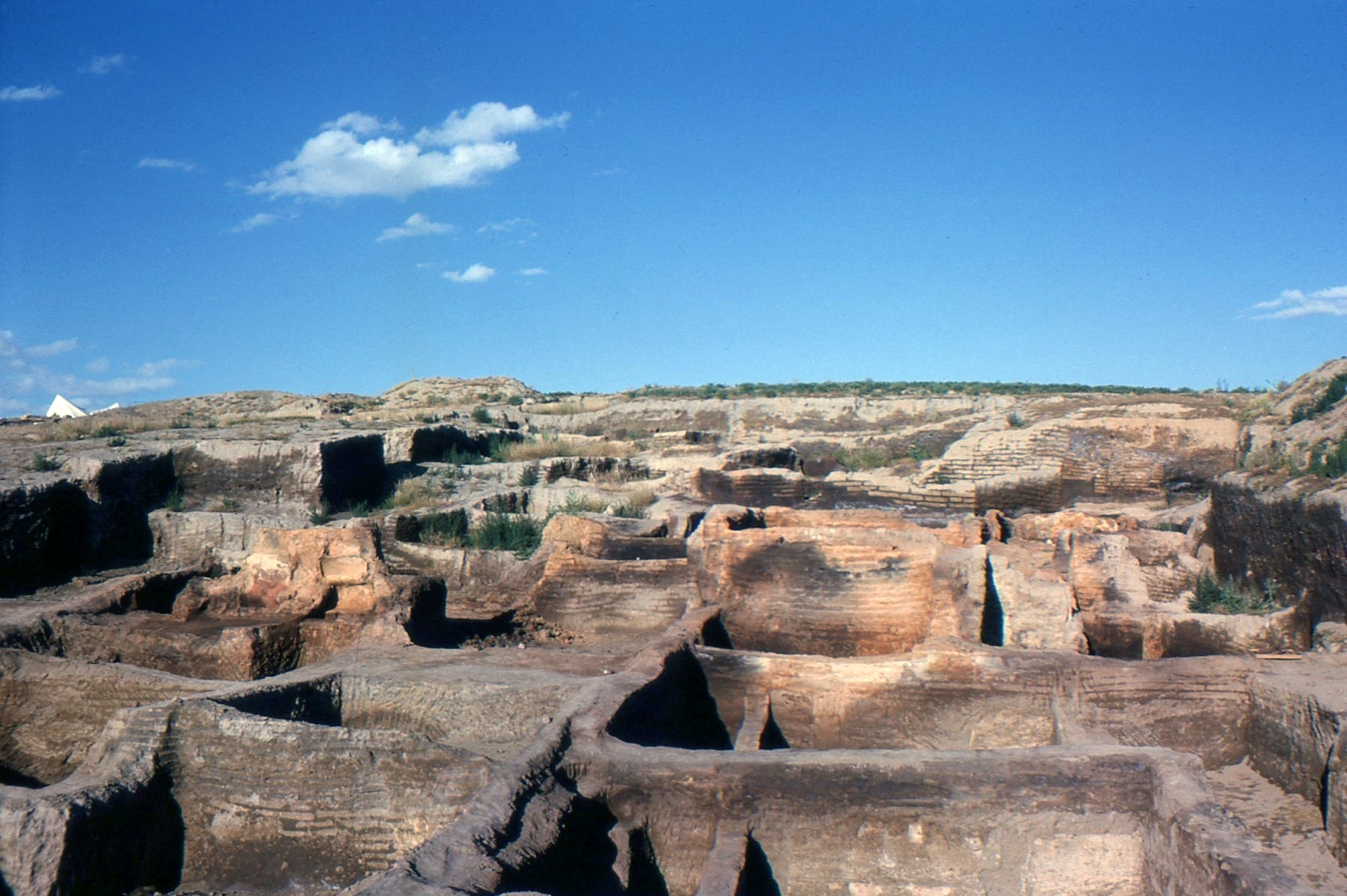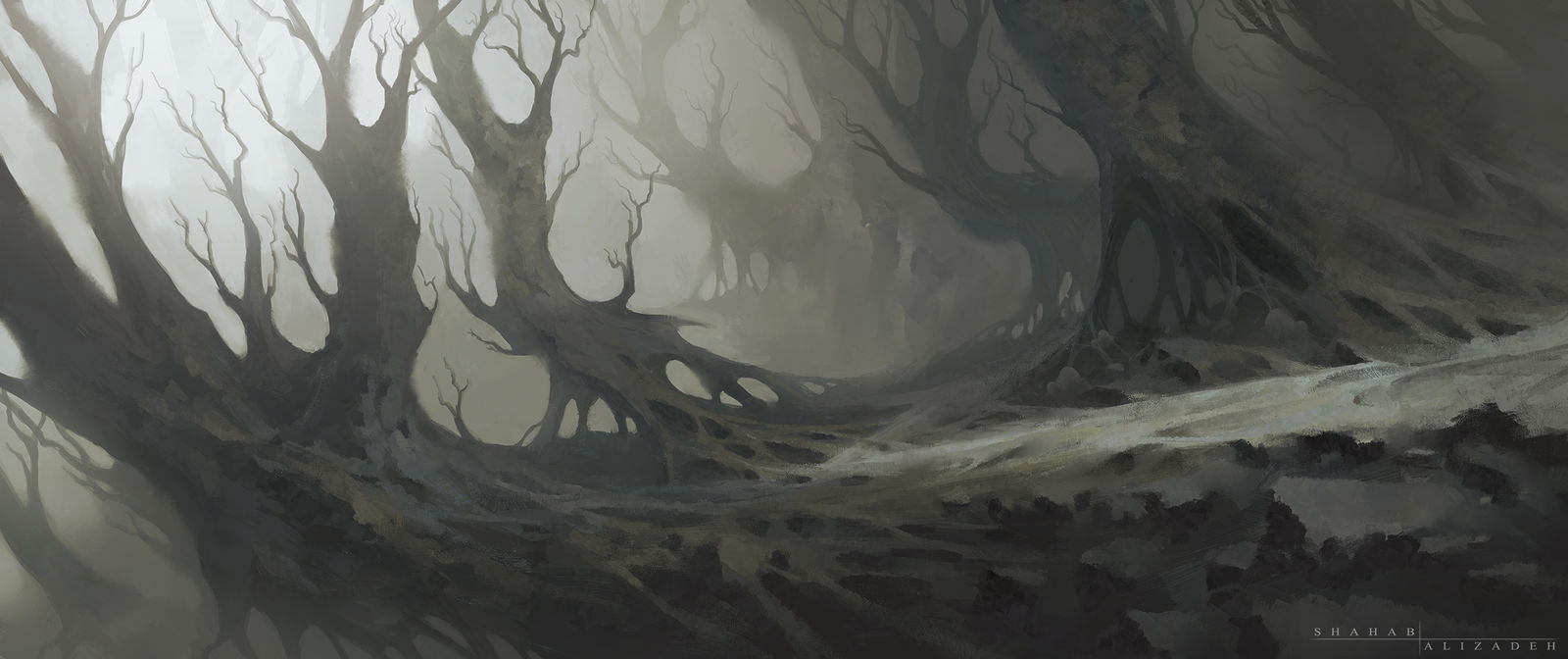This is part of a series of posts with a scene-by-scene critique, appreciation, and improvement of the 1986 TSR module B10, Night's Dark Terror.
Once through the goblins and apes, our adventurers approach the windowless tower of Golthar through one of four entrances to the buildings at its base. Two are unwatched and lead to areas infested with independent monsters. Two are at the front and watched by hobgoblin guards, one leading to Vlack's room and one to a monster area. But first, a little additional background of lore that I spun up to make more sense of the Hutaakan ruins.
At the time of their civilization's fall, the Hutaakans had been developing two themes of arcane lore. One, as mentioned previously, is the lore of creating permanent illusions of concealment and invisibility -- which explains why Xitaqa, and maybe other sites further on, are so hard to find.
The other thread of investigation concerned the use of sensory deprivation and hallucinogens to regress organisms down the evolutionary tree, the same wacky idea explored in the 1980 film Altered States. This degeneration explains why baboons - basically dog-faced apes -- still hang on to the ruins, for they are the devolved descendants of the jackal-headed civilization. It will also explain some of the things encountered later on in the adventure.
 |
| The caveman is not his final form. Still from WarnerBros.com. |
With this in mind, we can consider the two abandoned, monster-bearing rooms first.
The library is covered in thick webs, the customary tip-off that giant spiders are here. Once they're defeated, things can get more interesting, if you're magically able to read ancient Hutaakan ...
As a library of a lost ancient civilization, it's kind of an anticlimax to have the scrolls be all about civil records. My further elaboration was to make the Hutaakan method of writing be stitches in a supple and long-lasting fabric, of which the tapestry map is only one example. These fabric scrolls are mostly dull records, but among them, perhaps in a special or locked section, are scrolls explaining aspects of Hutaakan civilization: the development of illusion and the ascetic reaction against it, as well as disapproving accounts of forbidden experiments with sensory deprivation and certain mushrooms and berries that resulted in partial devolution to ape-form and then a "final degeneration to primordial plasm." To go with the scrolls' material, the writing set treasure object can be a sewing set instead, with silver needles and the different colored threads that showed different phrases and sentences.
Even madder is a scroll stitched up so it cannot be opened without cutting the black thread. Treated as forbidden knowledge, this work is a flight of unbridled madness inspired by the revelations of the isolation tanks. It claims the revelations that the primal Hutaakans were nothing less than the original creators and gods of the universe, who spun from their plasm all creatures and all possibilities. The proof of this is to be found in a loose, to be sure, reading of the nature of the four principal demon lords. All are actually devolved Hutaakan gods - Yeenoghu lowering himself into the form of the primitive gnoll; Demogorgon mutating more strangely into conjoined baboons; Orcus taking the face of an even lower creature and the aspect of a decaying corpse; and Juiblex as the final degeneration. It's wrong (maybe?) and leads nowhere, but it's a fun Easter egg.
Another back way is through the crypt, where in the adventure as written lurk two gelatinous cubes, somehow, that frightened off Golthar after he grabbed the.golden needle and thread (see p. 5) that are key to revelaing the secret map in the Sukiskyn tapestry. If we simply reshape the cubes into near-transparent humps of protoplasm, they fit the Altered States narrative perfectly. Also, some of the niches can have the shattered copper walls of the immersion tanks, old splashes of dried saline solution, and the brittle bones of ancient Hutaakans at various stages of degeneration into baboon form and beyond.
While bursting through one of the doors from the abandoned area into X8 will likely catch Vlack and his crew off-guard, they are fully prepared for approaches through the front door, X4-5. Getting caught in the crossfire of two ice wolf breaths is no joke, even for 5th edition parties, and it's likely that an alerted Vlack will send a minion upstairs to warn Golthar of the invasion - or even flee there himself if his morale flags. The architecture here has more Hutaakan statues, as well as mosaic work that I described as oddly similar to the patterns in the Sukisyn tapestry.
One more detail: Vlack's sword. Instead of just a boring +1, I gave the red garnet on the sword an extra ability: if it kills a sentient enemy by decapitation in open combat, it gains an additional +1 bonus for the rest of the day. There is a 1 in 6 chance that any kill will naturally be a headshot, or the shot can be called at a penalty (disadvantage, or -4, perhaps).




![[]](https://blogger.googleusercontent.com/img/b/R29vZ2xl/AVvXsEi1uyFArAJa8_LRh-aulSPrHm9CM5r1_3AZ2OtO-bSbboMteocPEHFj-4o4CNcTI1QqVLagpeX7rYWdfoune8O0NnF7OHH3pFp4DqRtqTpgsLccoQk50SK0bMYgZdSGai0qZBWS_dwVq7vW/w218-h320/)
